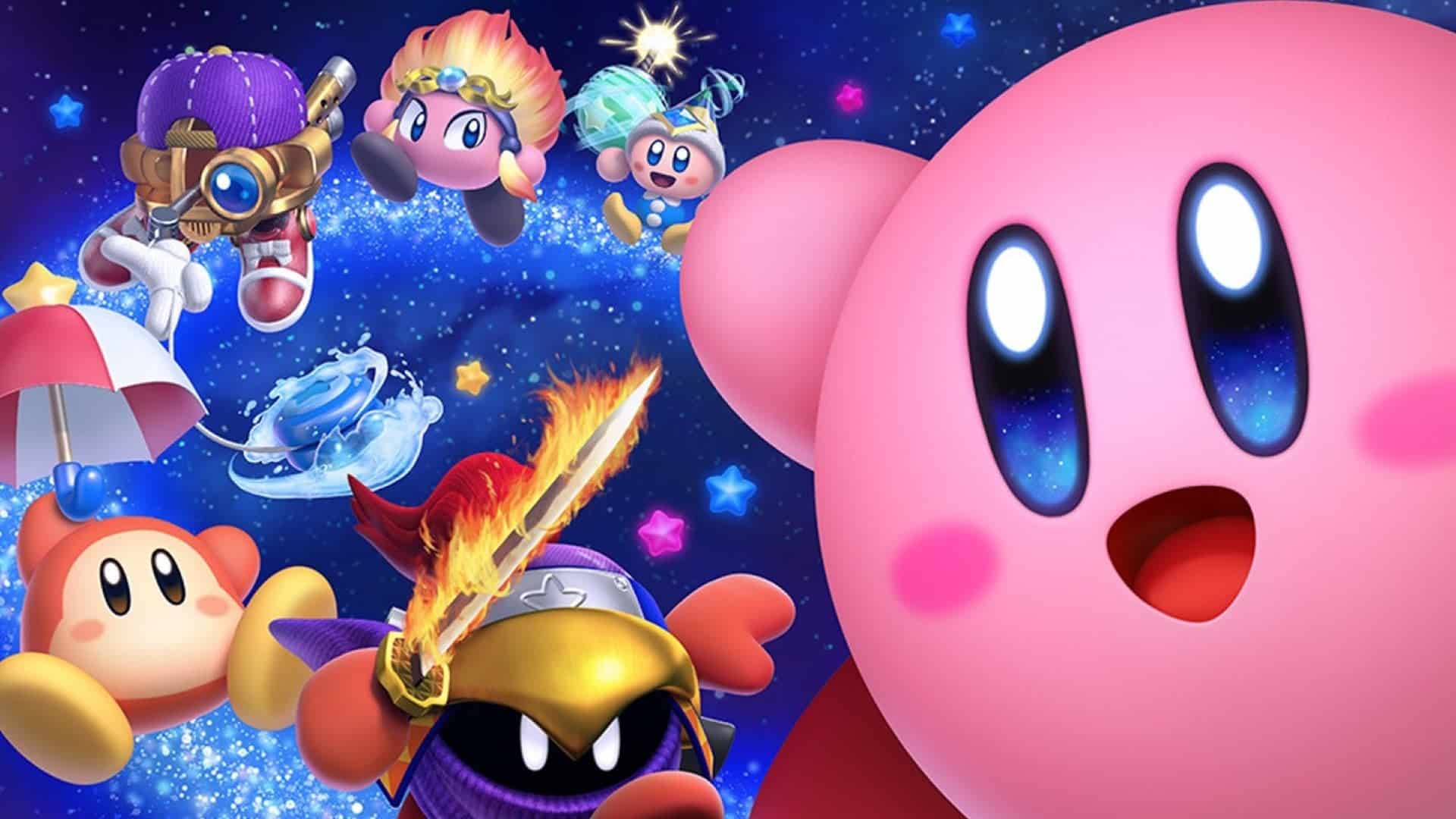Celebrating its 30th anniversary just last year, the Kirby franchise is one of the more nebulous series in Nintendo’s first-party library. While the mainline Mario and Zelda games all fit squarely into their platforming and action-adventure genres, respectively, each Kirby game is a dramatic shift from what came before. Arguably, a large part of the series’ charm and continued success rests on this formula, with the rules for the series itself as shapeless and amorphic as their protagonist, Kirby.
In each game, players assume the role of Kirby, whose primary power is to inhale and then assume the abilities and form of whatever he absorbs. Essentially, Kirby can be anything. The earlier titles in the series saw Kirby use this ability to solve platforming puzzles and participate in some light combat. However, as the series has evolved, developers have gotten ever more creative with how this ability is used to transform gameplay. He might not be as popular as Mario or Link, but Kirby is just as key to Nintendo’s sense of innovation as their other flagship mascots.
Kirby’s Dream Land (1992) – Game Boy
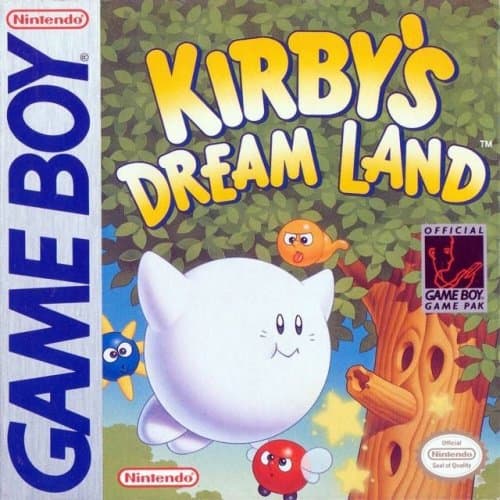
©Kirby’s Dream Land box art
Arriving in 1992 for the Game Boy is the very first Kirby game, Kirby’s Dream Land. As such, the game introduces several of the gameplay conventions that would become staples across later entries. The game is notable for being the first title developed by Masahiro Sakurai, who would later go on to be the mastermind behind the Smash Bros. series. In terms of gameplay, Dream Land has players assume the role of Kirby and move from left to right in a side-scrolling action-platformer. The unique ability to inhale foes and assume their abilities assists with movement but there is no real combat.
Adventure (1993) – NES
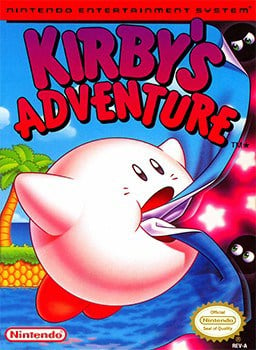
©Kirby’s Adventure cover art
Kirby’s Adventure released on the NES just one year after the debut Kirby title on Game Boy and introduced players to the mascot on home consoles. Sakurai returns as director for this title, aiming to develop a game that improved upon his previous work on Dream Land. Since Dream Land was in black and white due to the Game Boy’s lack of color pixels, Adventure is the first game where the mascot appears in color. The gameplay is very similar to Dream Land in that Kirby’s Adventure is also a side-scrolling action platformer, albeit one with expanded depth on the NES.
Pinball Land (1993) – Game Boy
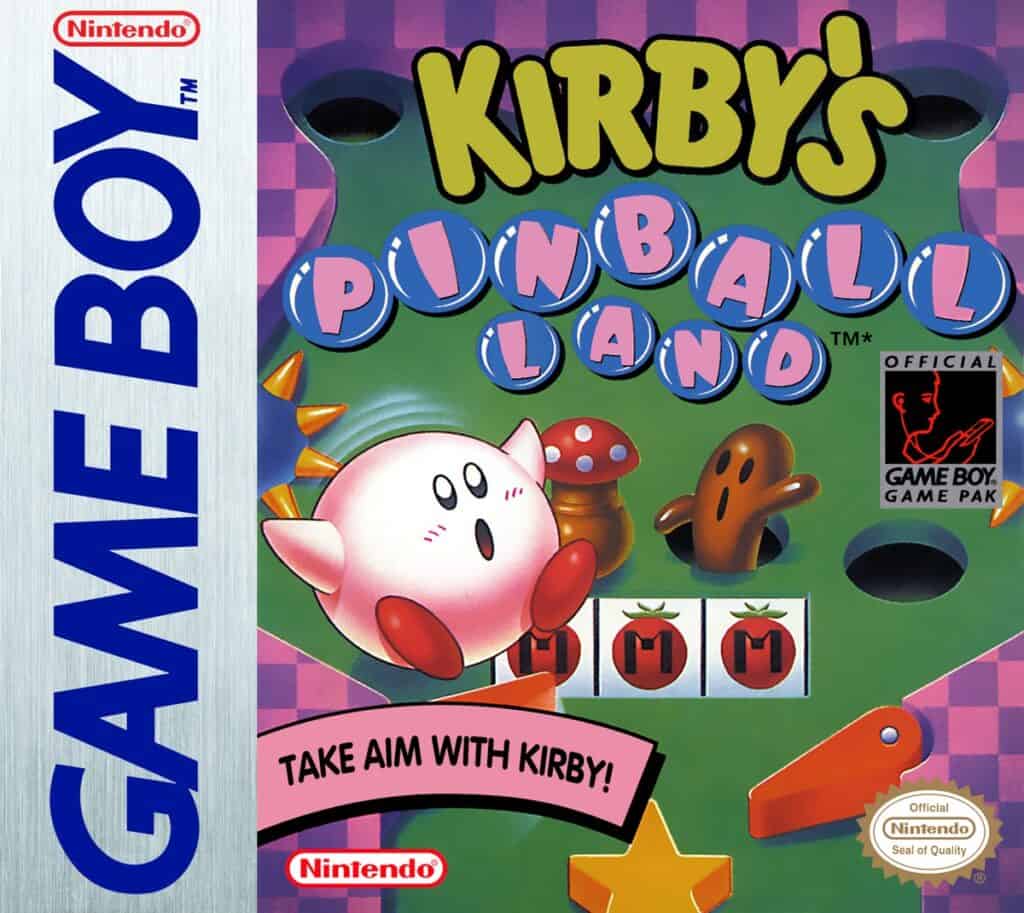
©Kirby’s Pinball Land cover art
Just a year after its first official release, the Kirby franchise would receive its very first spin-off in the form of Kirby’s Pinball Land. As the name would suggest, the title is a pinball game featuring the series mascot. Notably, series develop HAL Laboratory (an in-house Nintendo development studio) had other pinball video games under their belt. Due to the studio’s experience with the format, it makes sense that the first spin-off of the franchise is in a genre the developers were comfortable with.
Dream Course (1994) – SNES
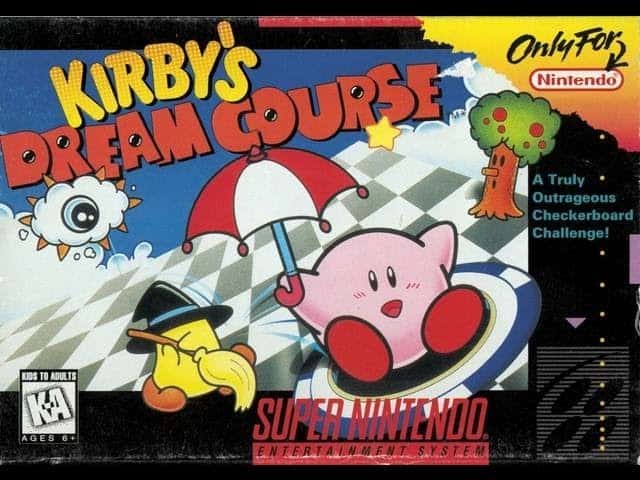
©Kirby’s Dream Course cover art
Another genre spin-off of the main franchise, Kirby’s Dream Course is a miniature golf game featuring Kirby. Prior to the game adopting the Kirby license it existed as a standalone mini-golf game. After the success of the first two series games on Game Boy and NES, HAL Laboratory went back into the title and added in the Kirby character and series aesthetic.
Avalanche (1995) – SNES
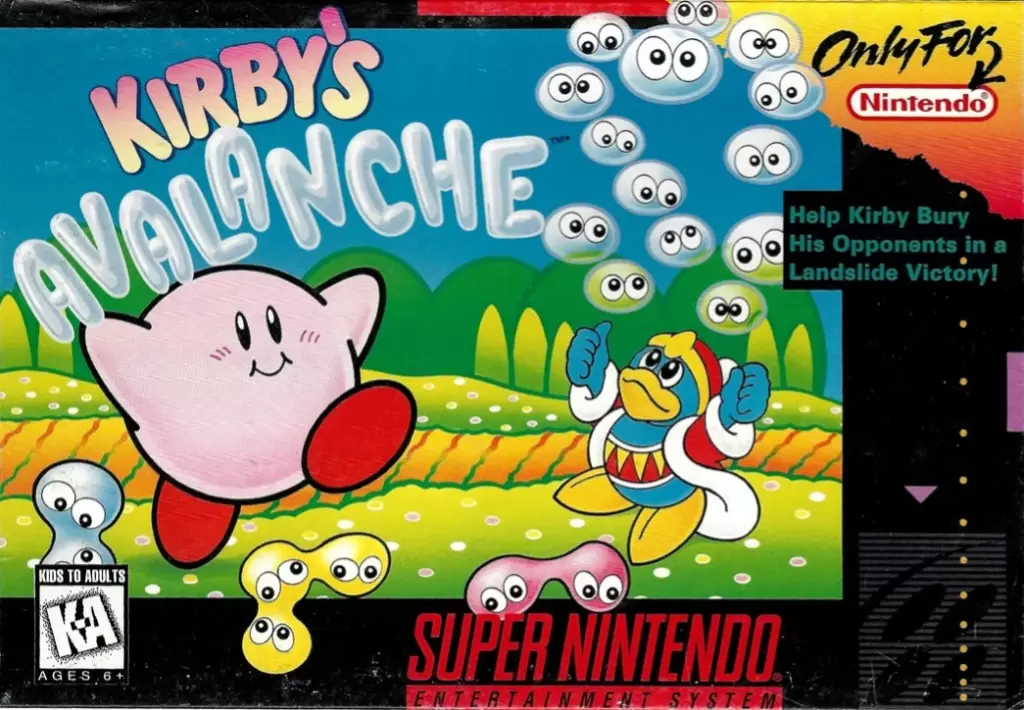
©Kirby’s Avalanche cover art
The first game in the franchise to not be developed by HAL Laboratory, Kirby’s Avalanche is a puzzle game similar to Puyo Puyo or Bust-a-Move. The game comes from legendary Puyo Puyo and Aleste developer Compile and is essentially Puyo Puyo with Kirby. Players must match colorful blobs with their like colors to disintegrate them and prevent their playing field from filling up.
Dream Land 2 (1995) – Game Boy
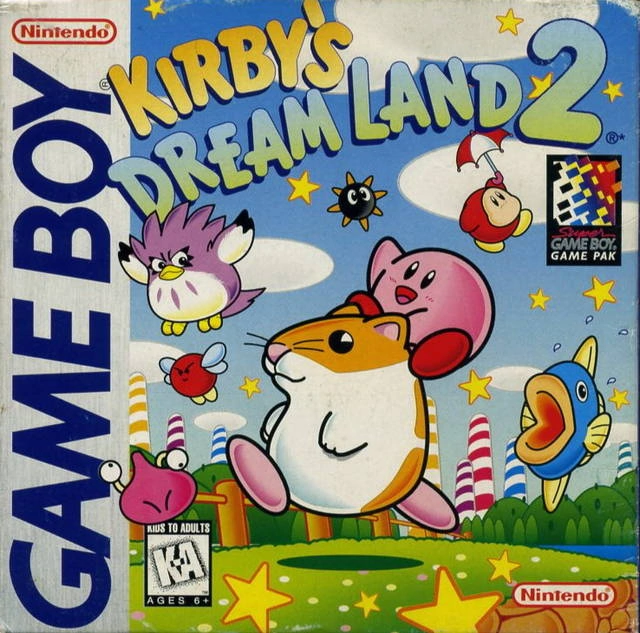
©Kirby’s Dream Land 2 cover art
Kirby’s Dream Land 2 is the first official mainline game in the series after 1993’s Kirby’s Adventure and the second title on the Game Boy. Gameplay in Dream Land 2 is very similar to the first game, with both titles being side-scrolling action-platformers. The biggest innovation that the sequel makes over its predecessor is the introduction of animal friends. These companions aid in traversal and impact Kirby’s abilities.
Block Ball (1995) – Game Boy
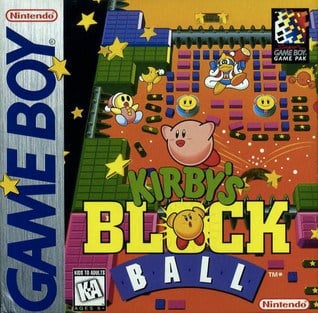
©Kirby’s Block Ball cover art
Another spin-off of the mainline franchise games, Kirby’s Block Ball is the Kirby version of games like Breakout or Arkanoid. Players control a platform that’s used to bounce a ball back and forth between a destructible brick wall. That said, the game does feature various power-ups and mini-games based on the franchise to help differentiate it from its gameplay inspirations. The title features 55 levels and was largely positively received for the ways that it improves on the core Breakout formula.
Super Star (1996) – SNES
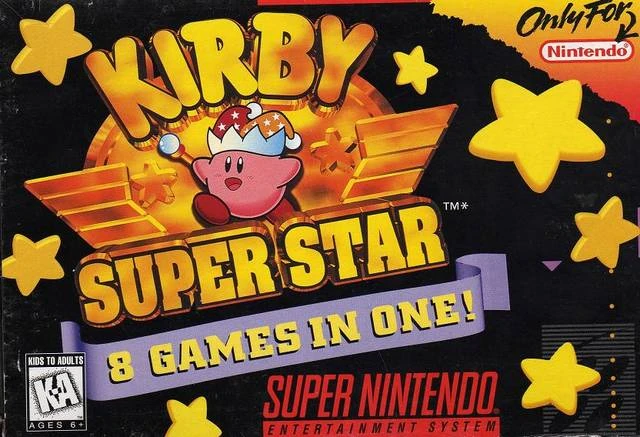
©Kirby Super Star cover art
Kirby Super Star is an anthology title that remixes older Kirby titles for the SNES and adds in some new mini-games as standalone entries. Featuring 8 games in total, the title is most notable for including a remake of the first Kirby game, Kirby’s Dream Land, as Spring Breeze. This shortened version of the first game features altered gameplay and improved visuals thanks to the SNES’ more capable hardware. The title is the third game in the series with Sakurai serving as director.
Star Stacker (1997) – Game Boy
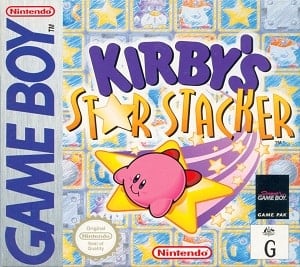
©Kirby Star Stacker cover art
Another puzzle game spin-off featuring Kirby, Kirby’s Star Stacker shares a lot in common with Soldam. Players match falling blocks in the play area to earn stars. When stars become sandwiched between two matching blocks, both the stars and the blocks disappear and add to the player’s score. Similar to many other Game Boy puzzle titles, Star Stacker features a multiplayer mode that requires two systems and two cartridges.
Dream Land 3 (1997)
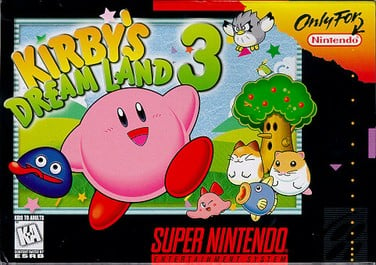
©Kirby’s Dream Land 3 cover art
- SNES
Despite being the third entry in the Kirby’s Dream Land series, Dream Land 3 is most famous for being the last game that Nintendo would publish for the SNES in North America. Gameplay is largely similar to the other Dream Land games, with the title being another side-scrolling action-platformer. However, Kirby’s Dream Land 3 is unique among all Nintendo first-party titles. It is one of the only first-party Nintendo games to feature blood and simulated graphic violence in its secret final boss fight against Zero.
Kirby 64: The Crystal Shards (2000) – Nintendo 64
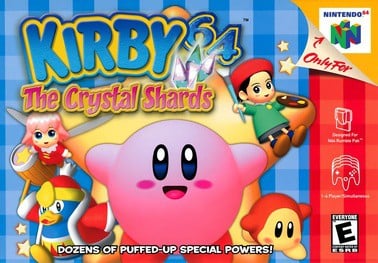
©Kirby 64 cover art
Kirby 64 is both the first game in the series for the Nintendo 64 and the first to feature 3D graphics. Gameplay is largely the same as the Dream Land games in that Kirby 64 is a side-scrolling action-platformer. The game does provide one major new addition to the gameplay formula in the ability to use Power Combos. These new joint abilities are combinations that occur when Kirby inhales two different enemy types.
Tilt ‘n’ Tumble (2000) – Game Boy Color
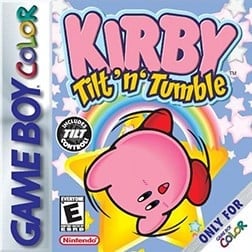
©Kirby Tilt ‘n’ Tumble cover art
- Game Boy Color
Most famous for its unique transparent pink cartridge, Kirby Tilt ‘n’ Tumble is an action puzzle game featuring the mascot. The cartridge contains an accelerometer that can detect movement and direction. This comes in handy for the gameplay, which sees players physically guide Kirby through courses by tilting their Game Boy Color. Despite positive reception, Tilt ‘n’ Tumble is the only game in the series to feature this kind of mechanic.
Nightmare in Dream Land (2002)

©Kirby Nightmare in Dream Land cover art
Nightmare in Dream Land is the Game Boy Advance remake of the very first game in the series, Kirby’s Dream Land. Core gameplay is almost identical to the Game Boy original, but the GBA hardware allows for improved visuals and audio. Additionally, while the level layouts and stage order are the same, the boss fights have been made more difficult.
Air Ride (2003) – GameCube
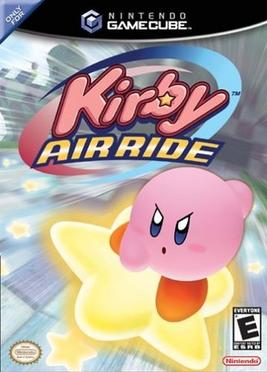
©Box art for Kirby Air Ride on GameCube
Air Ride is the first game in the Kirby series for the Nintendo GameCube, the manufacturer’s 6th-gen console. Rather than have the first series game for the console be another platformer, Nintendo decided to rescue a shelved Nintendo 64 Kirby game and resurrect it as an early title for the GameCube. Despite the title not receiving positive critical praise it sold well and is the only GameCube title in the franchise.
Kirby & The Amazing Mirror (2004) – Game Boy Advance
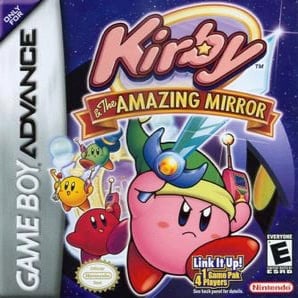
©Box art for Kirby and the Amazing Mirror on GBA
Kirby & The Amazing Mirror is both the 7th mainline game in the franchise and the first to adopt Metroidvania gameplay. Rather than utilizing the side-scrolling action-platformer format of its predecessors, the in-game map features a maze-like layout similar to Metroid. Players acquire new abilities throughout the game that allow them to revisit previous areas and acquire formerly inaccessible upgrades.
Canvas Curse (2005) – Nintendo DS
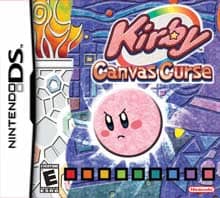
©Kirby Canvas Curse cover
Canvas Curse is an extremely unique game in the Kirby series in that it is the first where players do not directly control the mascot. Instead, players use the stylus of the Nintendo DS to draw rainbow lines on the screen. Kirby can then roll along these lines as if they were bridges, roads, and ramps. Gameplay is divided up among eight worlds, each with three levels, and a boss at the end of each. The title received plenty of praise for its innovations and clever use of the Nintendo DS hardware.
Squeak Squad (2006) – Nintendo DS
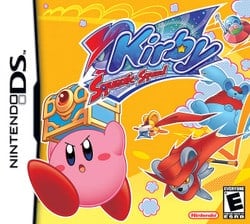
©Box art for Kirby Squeak Squad on DS
While its title might indicate it being a spin-off, Kirby Squeak Squad is a mainline series title and the second for the Nintendo DS. Gameplay follows in the footsteps of Kirby 64, reintroducing the combo abilities and further developing them through the use of Copy Scrolls. One of the larger criticisms against the game was its lack of innovation when compared to Canvas Curse. Perhaps in response to this, the next Kirby games would greatly alter the formula.
Super Star Ultra (2008) – Nintendo DS
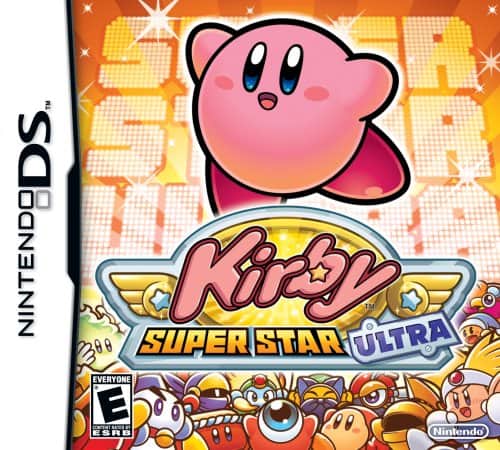
©Box art for Kirby Super Star Ultra on DS
Kirby Super Star Ultra is an enhanced DS remake of Kirby Super Star for the SNES. It features the same collection of remixes and mini-games as the 16-bit original but also adds 4 new games. In addition to the new and improved visuals and presentation, the title utilizes the Nintendo DS hardware to allow for touch-screen controls.
Epic Yarn (2010) – Wii
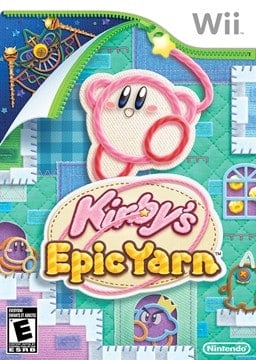
©Box art for Kirby’s Epic Yarn on Wii
The first game in the franchise for the Nintendo Wii, Kirby’s Epic Yarn is another side-scrolling platformer but with a unique twist. Kirby, along with all enemies and the environments, are completely made up of yarn, cloth, and crafting supplies. This gives the game a unique visual style and sets it apart from other Kirby games. Epic Yarn also has the distinction of being the first Kirby game on a home console since Air Ride in 2003. The game has a spiritual successor in Yoshi’s Wooly World.
Mass Attack (2011) – Nintendo DS
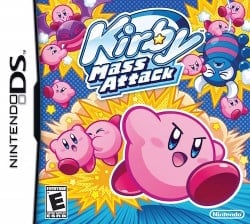
©Box art for Kirby Mass Attack on DS
Mass Attack is the fourth and final Kirby game to be released for the Nintendo DS. Somewhat of a follow-up to Canvas Curse, players do not control Kirby directly but instead use the touch screen and stylus to command a group of Kirbys. Similar to titles like Lemmings, players must successfully navigate their group of Kirbys from one end of a stage to another. Much like Canvas Curse, critics praised the title for its ingenuity and spin on the established Kirby formula.
Return to Dream Land (2011) – Wii
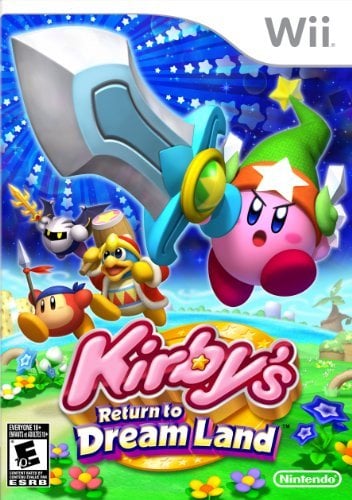
©Box art for Kirby’s Return to Dreamland on Wii
Although it’s not the first series game for the Wii, Return to Dreamland is the first traditional Kirby game for the console. After the departure of Epic Yarn, Return to Dreamland brings the series back to its roots and introduces the first official follow-up to Kirby 64. Gameplay is identical to other mainline titles, with Kirby navigating across levels spread out between multiple worlds and inhaling foes to assume their powers. Action takes place on a 2D plane but the game features 3D models for all characters and environmental assets.
Dream Collection (2012) – Wii
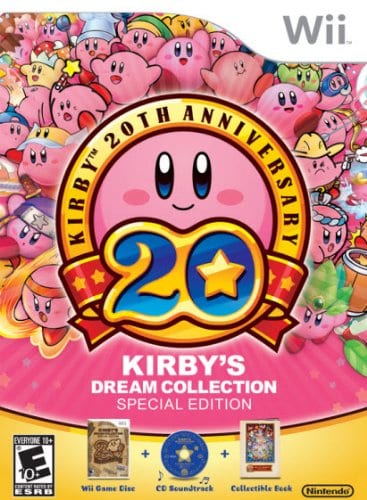
©Box art for Kirby’s Dream Collection on Wii
Another anthology collection consolidating older Kirby titles, Kirby’s Dream Collection brings the first 6 mainline series games to the Wii. Collecting Dream Land 1-3, Adventure, Kirby Super Star and Kirby 64, the Dream Collection does not remaster these titles but instead brings them all under one umbrella. Even though the games included are unaltered from their original format, the title sold very well, moving over 100,000 units in its first week.
Triple Deluxe (2014) – 3DS
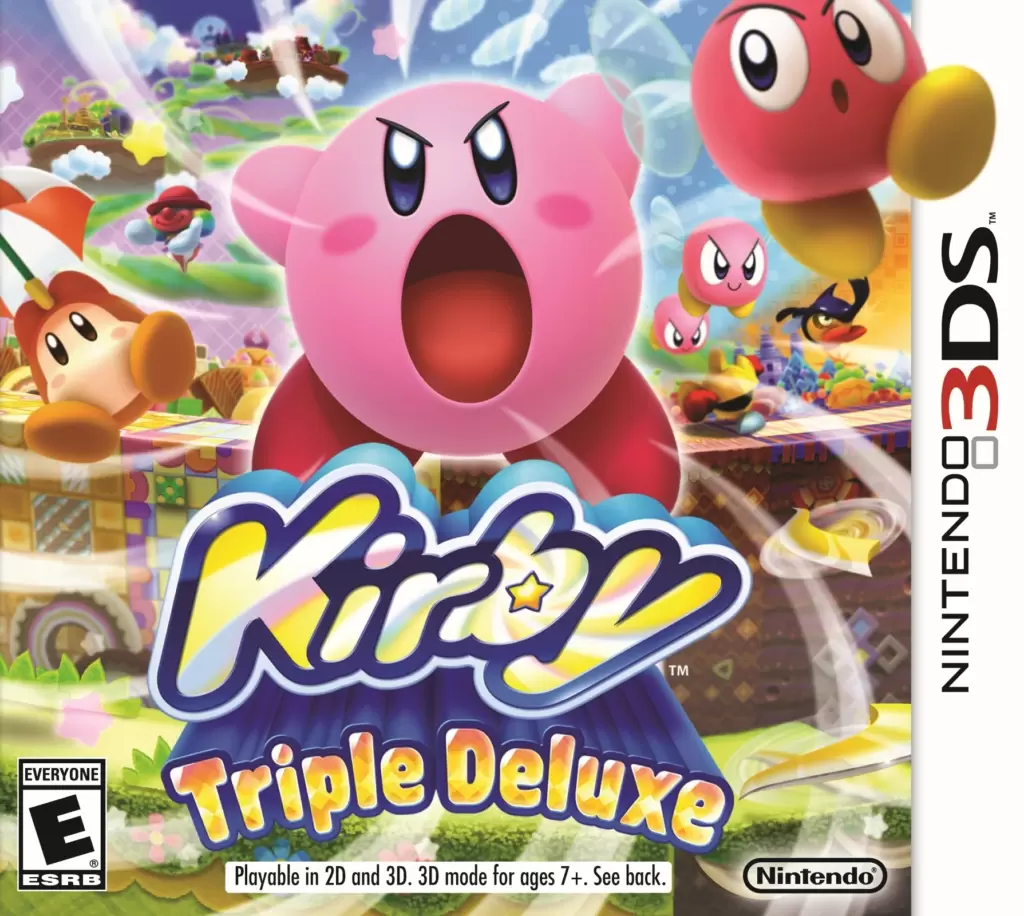
©Box art for Kirby Triple Deluxe on 3DS
Triple Deluxe is another traditional Kirby platformer similar to Return to Dreamland. Gameplay again takes place on a 2D plane but features 3D graphics, and many of the core gameplay mechanics return. The title is most notable for one of its included mini-games, Kirby Fighters, which would go on to spawn its own standalone sequel.
Kirby and the Rainbow Curse (2015) – WiiU
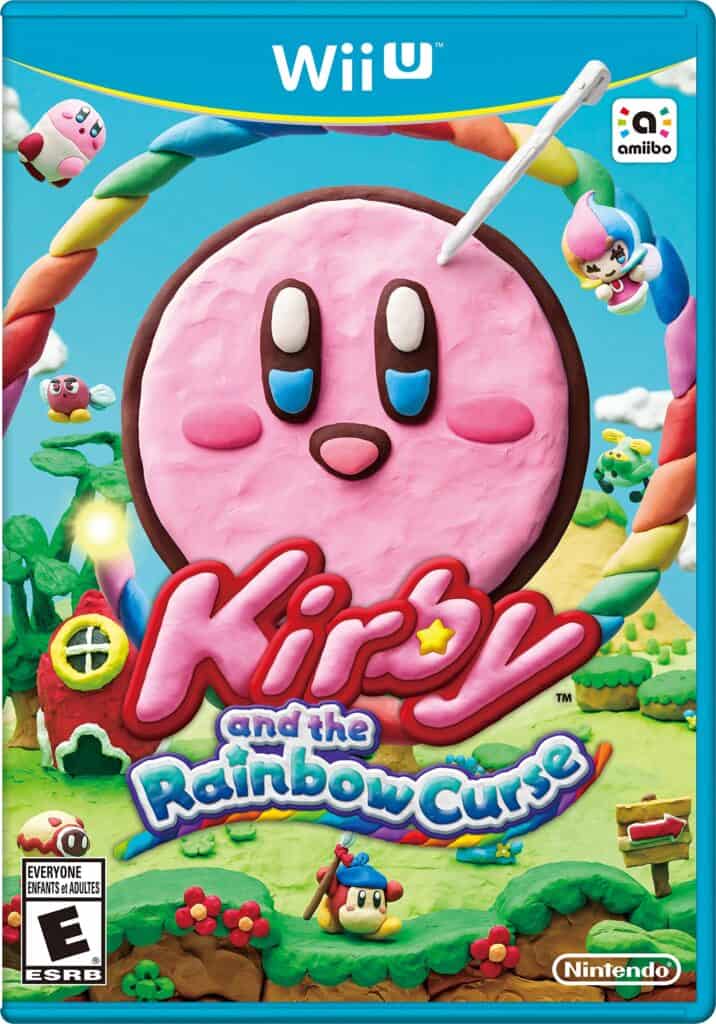
©Box art for Kirby and the Rainbow Curse on WiiU
The one and only title in the series for the WiiU, Kirby and the Rainbow Curse is the successor to Canvas Curse. Players use the WiiU GamePad and stylus to draw rainbow paths that Kirby can traverse, stringing them together to help him navigate across levels. The title also shares some of the mechanics of Epic Yarn, with Kirby able to assume various helpful forms that help him get through certain areas. Despite sharing several concepts with Canvas Curse, Rainbow Curse did not receive the same level of critical and commercial success.
Planet Robobot (2016) – 3DS
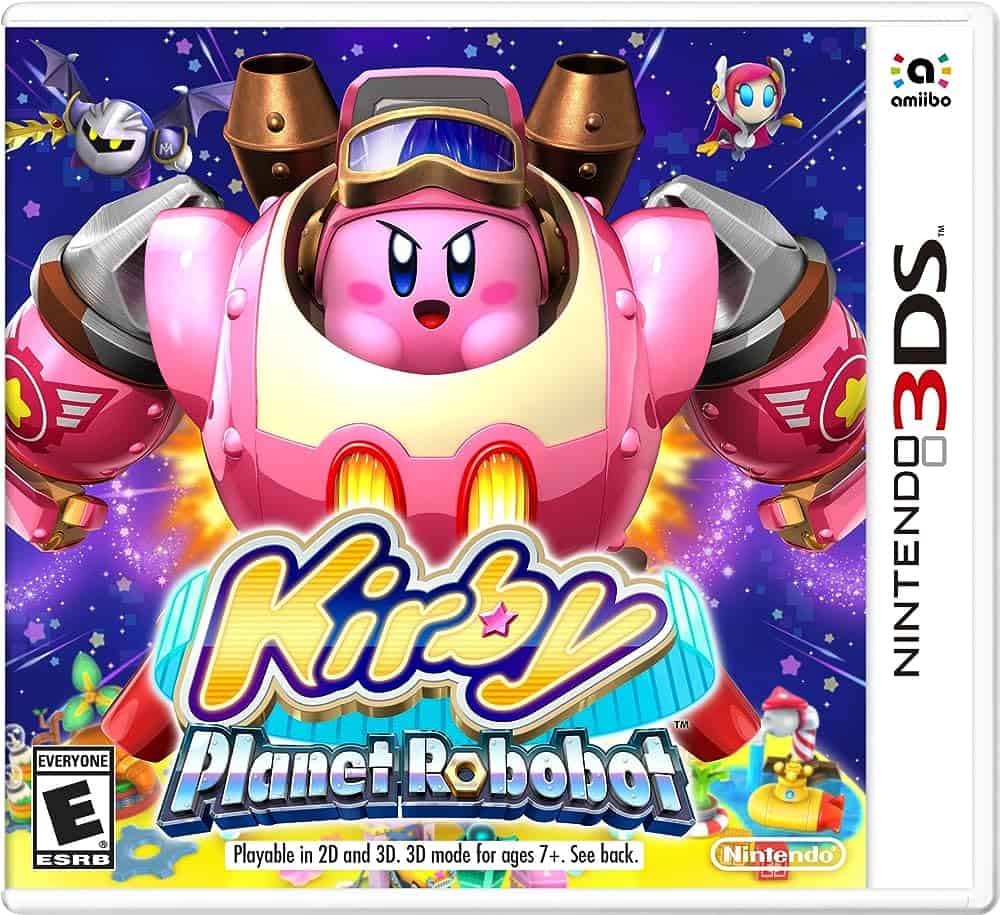
©Box art for Kirby Robobot on 3DS
Planet Robobot is the spiritual successor to Triple Deluxe and one of the last series of games for the 3DS. Similar to other titles in the series, Kirby navigates through a succession of side-scrolling stages. Along the way, he can inhale enemies to absorb their powers and use them to break blocks or solve traversal puzzles. New to Robobot is a pilotable mech suit that Kirby can use in certain sections. The game also introduces the mini-game Team Kirby Clash and Kirby 3D Rumble, both of which would eventually receive their own standalone titles.
Blowout Blast (2017) – 3DS
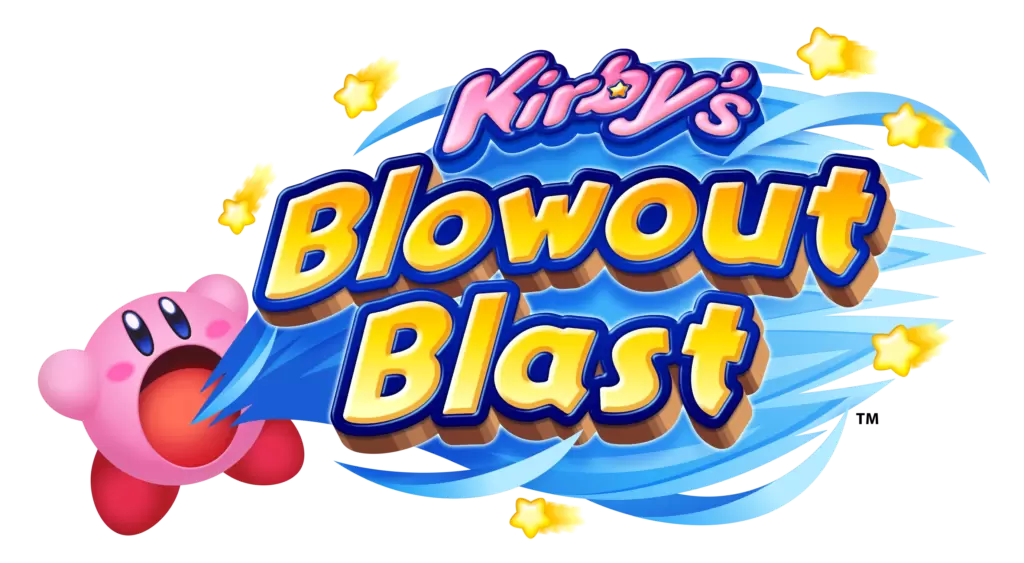
©Kirby’s Blowout Blast logo for the Nintendo eShop
Blowout Blast is the expanded standalone version of the Kirby 3D Rumble mini-game from Planet Robobot. Instead of inhaling enemies to absorb their powers, Kirby only inhales foes to shoot them back out at others. Successfully hitting strings of enemies generates a combo meter and increased score. Earning a high enough score in each world unlocks variations of the stages that feature increased challenge.
Battle Royale (2018) – 3DS
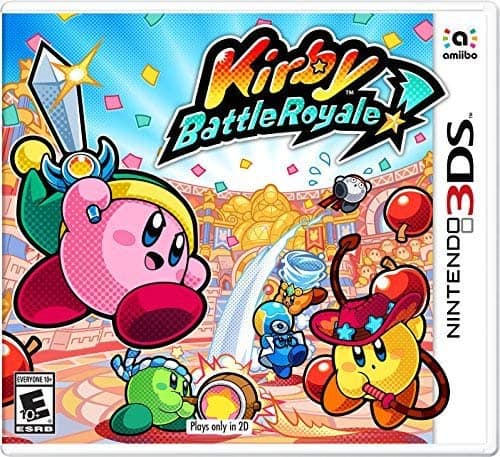
©Box art for Kirby Battle Royale on 3DS
Battle Royale is the final game in the series for the Nintendo 3DS. The game is an arena fighter that uses a top-down perspective and sees Kirby fighting against other versions of himself with a variety of abilities. In addition to the expected co-op and competitive multiplayer modes, Battle Royale also features a full single-player campaign.
Star Allies (2018) – Nintendo Switch
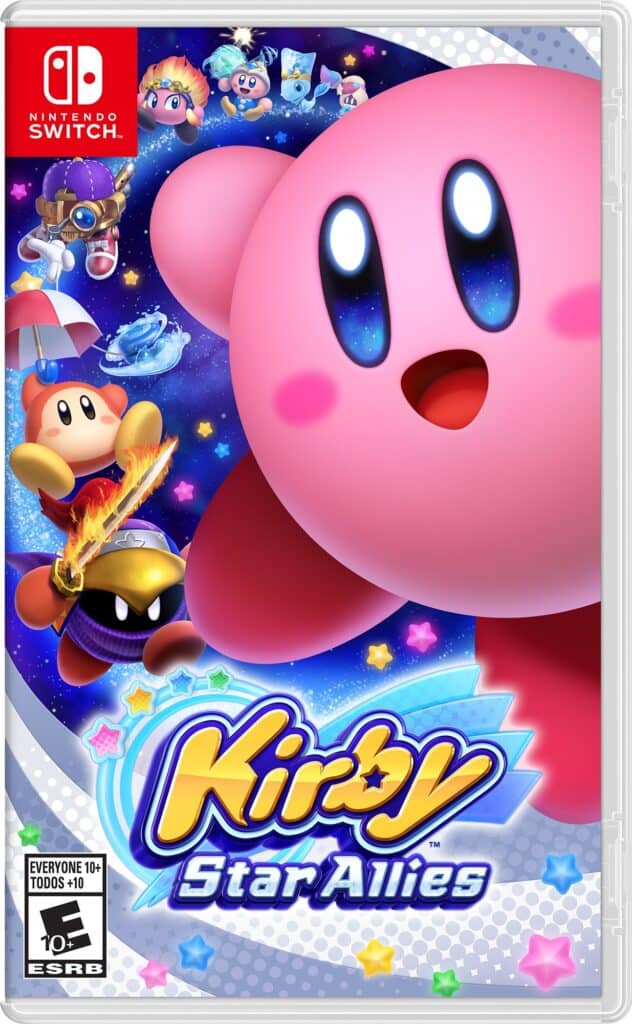
©Box art for Kirby Star Allies on Nintendo Switch
Star Allies is the first game in the Kirby series for the Nintendo Switch. As another 2.5D platformer, the title follows in the footsteps of both Triple Deluxe and Planet Robobot. Interestingly, Star Allies reintroduces features not seen for years by bringing back animal companions and combination abilities. While the title did receive plenty of praise for its visuals and reintroduction of the franchise to newer Nintendo hardware, others criticized the title for its lack of challenge.
Super Kirby Clash (2019) – Nintendo Switch
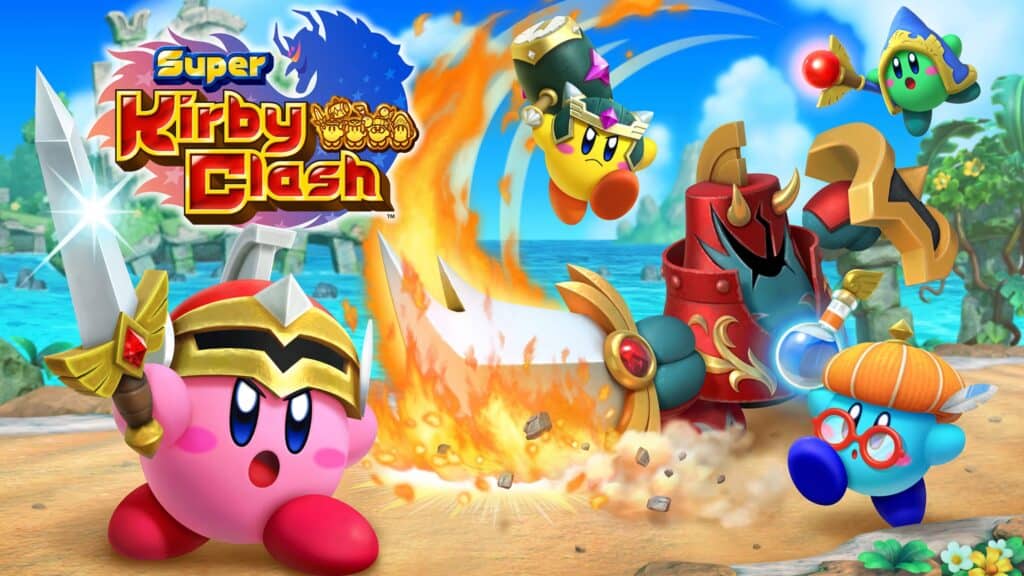
©Key art for Super Kirby Clash on Nintendo Switch
Super Kirby Clash is the free-to-play expanded version of the Team Kirby Clash mini-game from Planet Robobot. As a free-to-play title, the game features microtransactions to purchase Gem Apples, a necessary item for progression. While the microtransactions allow players willing to spend real-world money to advance faster, players can complete the game entirely as a free title and earn the Gem Apple resource through in-game activities.
Kirby Fighters 2 (2020) – Nintendo Switch
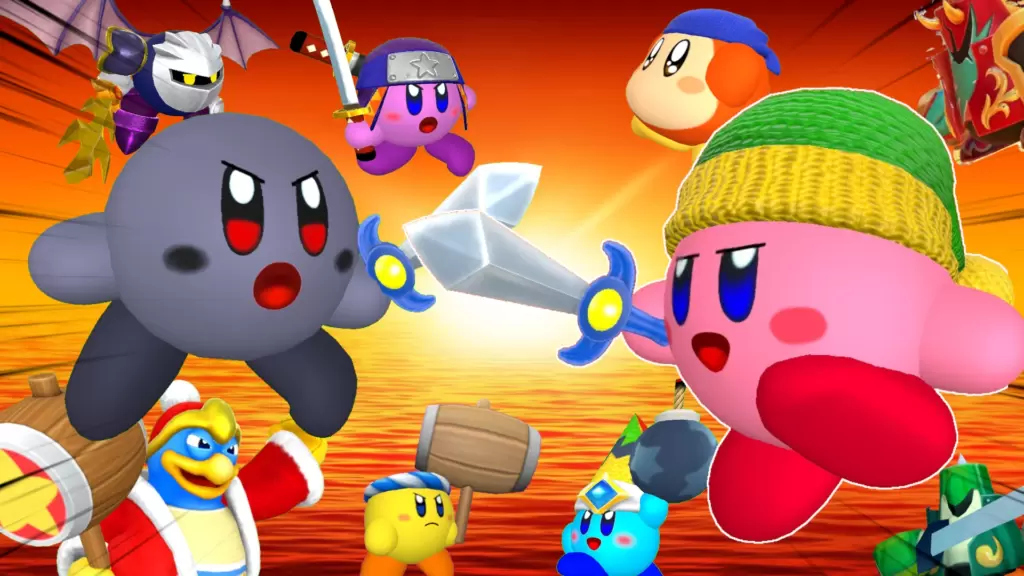
©Kirby Fighters 2 roster for Nintendo Switch
Another expanded mini-game from previous series titles, Kirby Fighters 2 is an online multiplayer arena fighter featuring multiple versions of the titular hero. Up to 4 players can compete via either local or online competitive multiplayer and use various versions of Kirby, each with their own unique abilities.
Kirby and the Forgotten Land (2022) – Nintendo Switch
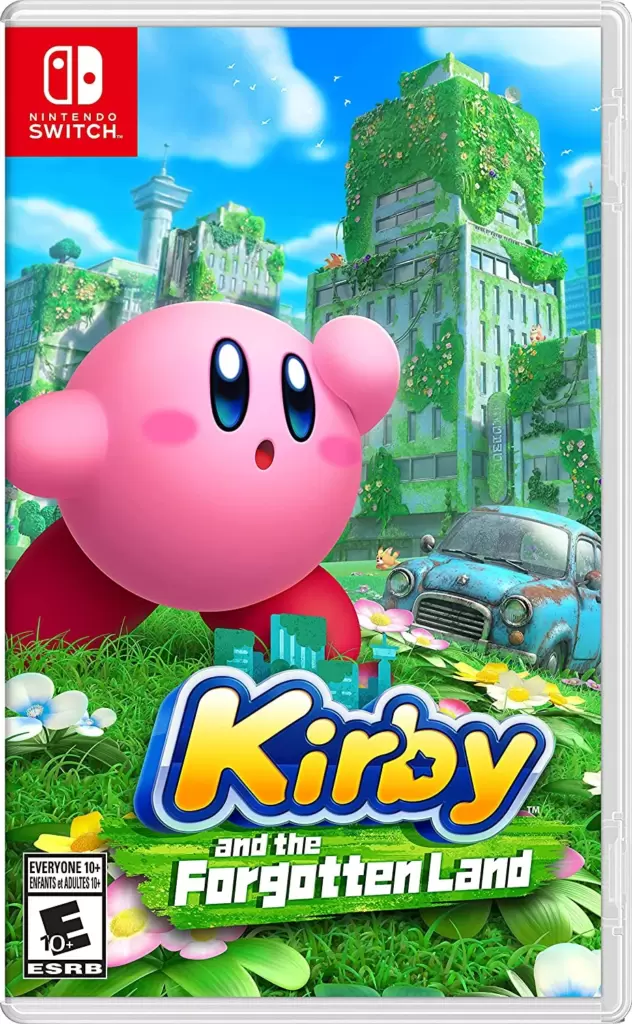
©Kirby and the Forgotten Land box art for Nintendo Switch
Not only is Kirby and the Forgotten Land the latest mainline title in the series, it’s also quite possibly the best. Forgotten Land does away with the side-scrolling nature of its predecessors in favor of being the first full-3D platformer in the series history. Kirby can still inhale and copy the abilities of his foes but can also now upgrade these abilities through an in-game shop, adding a slight RPG-style progression to proceedings. Critic and fan reception to the game are exceedingly positive, with many calling Forgotten Land the best title in the franchise.
Dream Buffet (2022) – Nintendo Switch
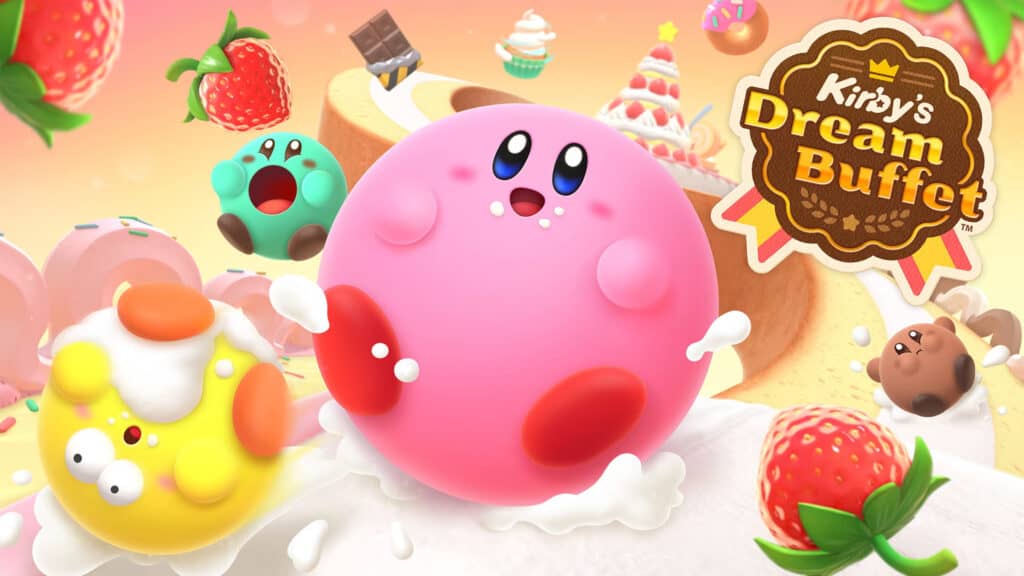
©eShop icon for Kirby Dream Buffet
Dream Buffet is another series spin-off in which 4 players compete as different versions of Kirby navigating through food-themed courses. Players are victorious by being the Kirby who eats the most strawberries as they make their way through the courses. However, as players eat more strawberries, they grow in size and become easier targets for sabotage at the hands of other players. Despite a lighthearted theme and fun competitive gameplay, the title received mostly mixed reviews.
Return to Dream Land Deluxe (2023) – Nintendo Switch
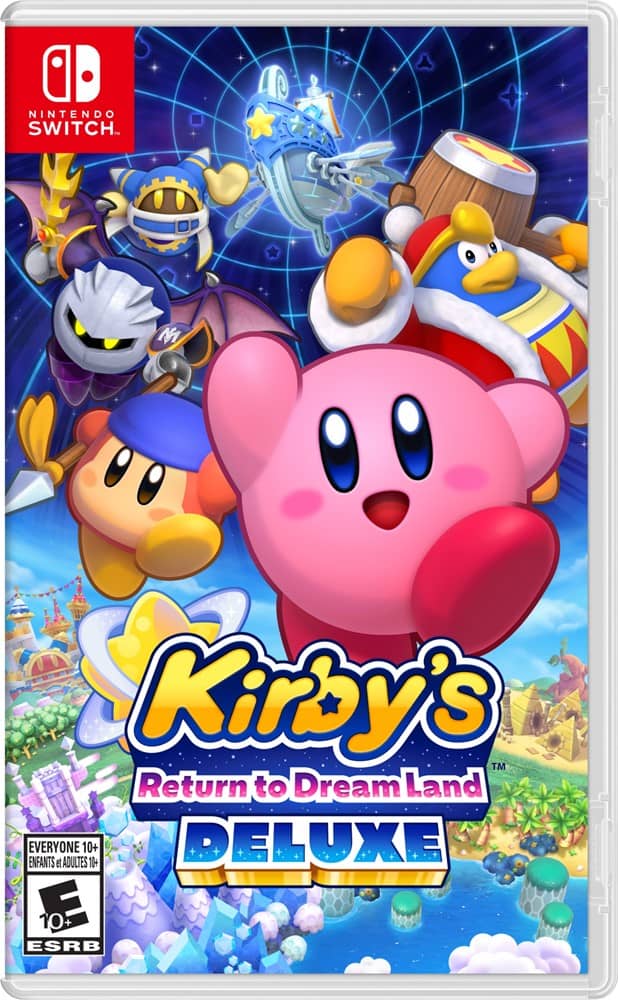
©Box art for Kirby Return to Dreamland Deluxe on Nintendo Switch
The most recent release in the Kirby franchise is a remake of the Wii classic Return to Dream Land on the Nintendo Switch. The title is mostly identical to its source material save for updated visuals and audio thanks to improved hardware. Outside of the main single-player story mode, the remake of Return to Dream Land introduces a slew of new mini-games and small quality-of-live improvements.
